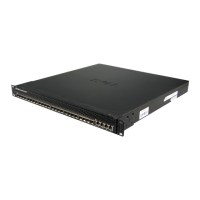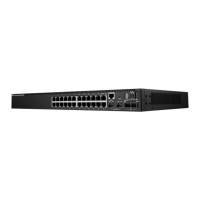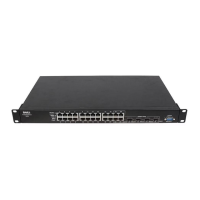Using the CLI 111
2
Using the CLI
Introduction
This chapter describes the basics of entering and editing the Dell™ PowerConnect™ 62xx Series
Command Line Interface (CLI) commands and defines the command hierarchy. It also explains
how to activate the CLI and implement its major functions.
This chapter covers the following topics:
• Entering and Editing CLI Commands
• CLI Command Modes
•Starting the CLI
• Using CLI Functions and Tools
Entering and Editing CLI Commands
A CLI command is a series of keywords and arguments. Keywords identify a command and
arguments specify configuration parameters. For example, in the command show interfaces
status ethernet
1/g5,
show, interfaces and status are keywords; ethernet is an argument that
specifies the interface type, and
1/g5
specifies the unit/port.
When working with the CLI, the command options are not displayed. The command is not
selected by a menu but is entered manually. To see what commands are available in each mode
or within an Interface Configuration, the CLI provides a method of displaying the available
commands, the command syntax requirements and in some instances parameters required to
complete the command. The standard command to request context-sensitive help is the <?>
key.
Two instances where the help information can be displayed are:
•
Keyword lookup
— The <?> key is entered in place of a command. A list of all valid
commands and corresponding help messages is displayed.
•
Partial keyword lookup
— A command is incomplete and the <?> key is entered in place of a
parameter. The matched parameters for this command are displayed.
The following features and conventions are applicable to CLI command entry and editing:
• History Buffer
• Negating Commands

